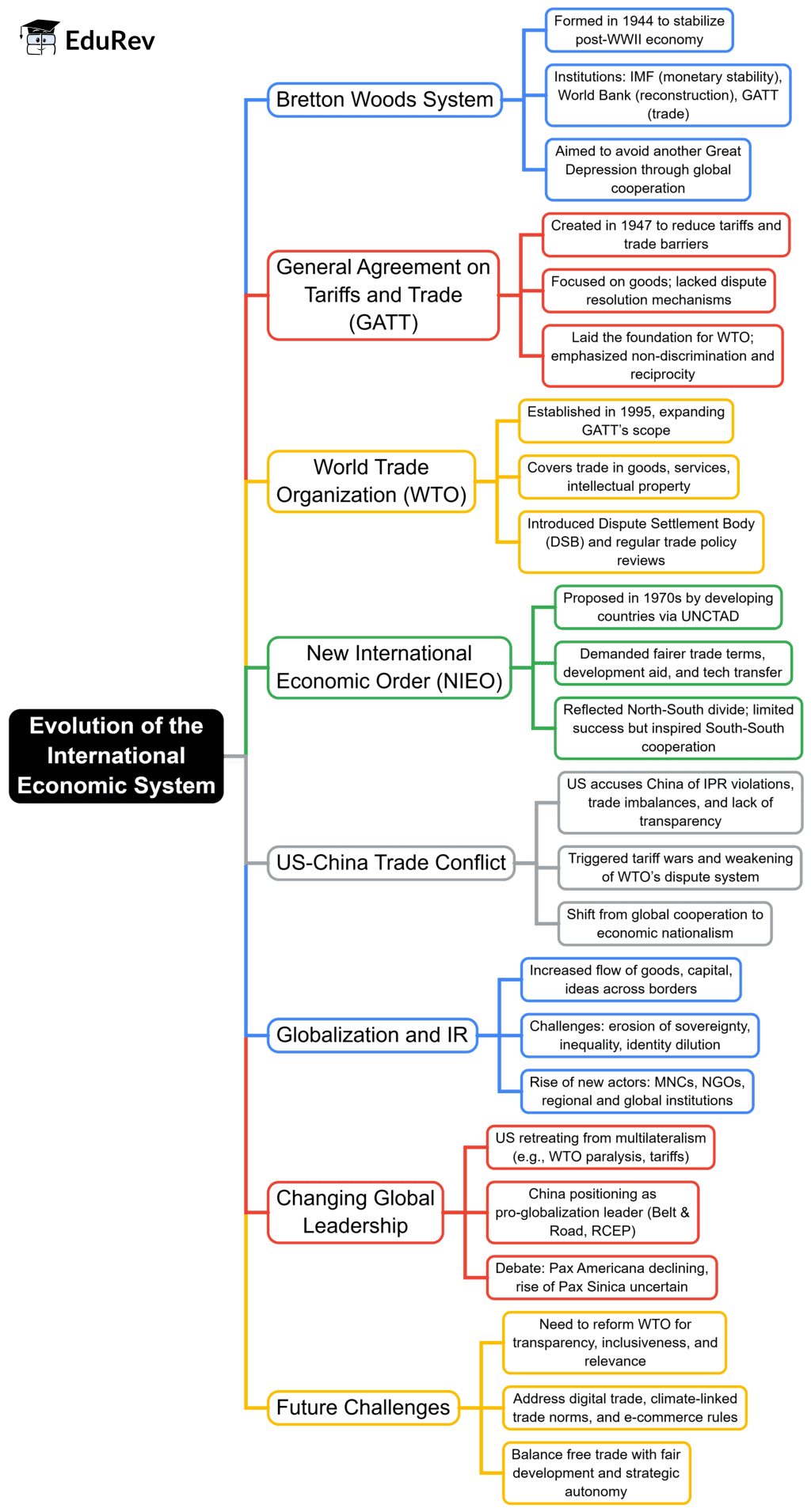UPSC Exam > UPSC Notes > PSIR Optional for UPSC > Mind Map: Evolution of the International Economic System
Mind Map: Evolution of the International Economic System | PSIR Optional for UPSC PDF Download

The document Mind Map: Evolution of the International Economic System | PSIR Optional for UPSC is a part of the UPSC Course PSIR Optional for UPSC.
All you need of UPSC at this link: UPSC
|
173 videos|574 docs|148 tests
|
FAQs on Mind Map: Evolution of the International Economic System - PSIR Optional for UPSC
| 1. What are the key phases in the evolution of the international economic system? |  |
Ans. The evolution of the international economic system can be divided into several key phases: the mercantilist phase (16th to 18th century), where nations focused on accumulating wealth through trade; the classical economic phase (19th century), characterized by free trade and the gold standard; the Bretton Woods system (1944), which established fixed exchange rates and institutions like the IMF and World Bank; and the current era of globalization (late 20th century to present), marked by trade liberalization, the rise of multinational corporations, and digital economies.
| 2. How did the Bretton Woods Conference shape the international economic system? |  |
Ans. The Bretton Woods Conference in 1944 established a framework for international economic cooperation. It created institutions like the International Monetary Fund (IMF) and the World Bank to promote monetary stability and economic development. The conference also established fixed exchange rates tied to the US dollar, which was convertible to gold, fostering global trade and investment. This system lasted until the early 1970s when it transitioned into a more flexible exchange rate system.
| 3. What role do international institutions play in the current economic system? |  |
Ans. International institutions like the IMF, World Bank, and World Trade Organization (WTO) play crucial roles in the current economic system by providing financial assistance, facilitating trade negotiations, and promoting economic stability. They help manage economic crises, set rules for international trade, and support developing countries through funding and policy advice. Their influence shapes global economic policies and practices.
| 4. What are the major challenges facing the international economic system today? |  |
Ans. The major challenges facing the international economic system today include rising protectionism, trade wars, income inequality, and the impact of climate change on economies. Additionally, the COVID-19 pandemic has disrupted global supply chains and highlighted vulnerabilities in the system. Addressing these challenges requires international cooperation and reforming existing institutions to adapt to a rapidly changing global environment.
| 5. How has globalization impacted the international economic system? |  |
Ans. Globalization has significantly impacted the international economic system by increasing interconnectedness among countries through trade, investment, and technology. It has led to economic growth in many developing nations, improved access to goods and services, and the rise of global supply chains. However, it has also contributed to job displacement in certain sectors, widening economic disparities, and challenges related to regulatory standards and cultural homogenization.
Related Searches





















